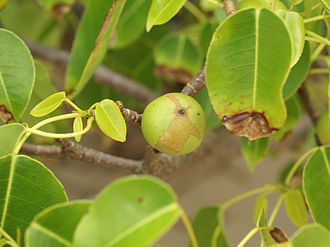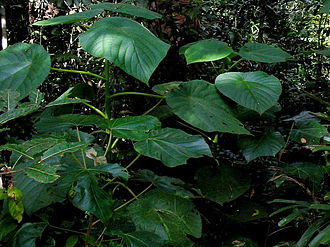Nature Death – NEVER Leave Your House
The manchineel tree is a species of flowering plant in the spurge family. It is native to tropical southern North America and northern South America.
A present-day Spanish name is in fact manzanilla de la muerte, “little apple of death”. This refers to the fact that manchineel is one of the most dangerous trees in the world. Manchineel is native to the Caribbean & the U.S. state of Florida.

All parts of the tree contain strong toxins, some unidentified. Its milky white sap contains phorbol and other skin irritants, producing strong allergic dermatitis. Standing beneath the tree during rain will cause blistering of the skin from mere contact with this liquid (even a small drop of rain with the milky substance in it will cause the skin to blister). The sap has also been known to damage the paint on cars. Burning the tree may cause ocular injuries if the smoke reaches the eyes. Contact with its milky sap (latex) produces bullous dermatitis, acute keratoconjunctivitis and possibly large corneal epithelial defects.
The fruit is possibly fatal if eaten; however, “fatalities from ingestion are not reported in the modern literature” and “ingestion may produce severe gastroenteritis with bleeding, shock, bacterial superinfection, and the potential for airway compromise due to edema. Patients with a history of ingestion and either oropharyngeal burns or gastrointestinal symptoms should be evaluated for admission in hospital. Care is supportive.”
When ingested, the fruit is reportedly “pleasantly sweet” at first, with a subsequent “strange peppery feeling …, gradually progress[ing] to a burning, tearing sensation and tightness of the throat”. Symptoms continue to worsen until the patient can “barely swallow solid food because of the excruciating pain and the feeling of a huge obstructing pharyngeal lump.”
From Wikipedia, you can read more. YIKES!
And Australia where even what looks like Ivy will try and kill you.

Dendrocnide moroides, also known as the stinging brush, gympie stinger, mulberry-leaved stinger, gympie gympie, gympie, stinger, the suicide plant, or moonlighter, is common to rainforest areas in the north east of Australia. It is best known for stinging hairs that cover the whole plant and deliver a potent neurotoxin when touched. It is the most toxic of the Australian species of stinging trees. The fruit is edible if the stinging hairs that cover it are removed.
(Oh yeah, remove the stinging hairs, give me 5 to eat).
Contact with the leaves or twigs causes the hollow, silica-tipped hairs to penetrate the skin. The hairs cause an extremely painful stinging sensation that can last for days, weeks, or months, and the injured area becomes covered with small, red spots joining together to form a red, swollen welt. The sting is infamously agonizing. Ernie Rider, who was slapped in the face and torso with the foliage in 1963, said “For two or three days the pain was almost unbearable; I couldn’t work or sleep, then it was pretty bad pain for another fortnight or so. The stinging persisted for two years and recurred every time I had a cold shower. … There’s nothing to rival it; it’s ten times worse than anything else.
You can read more at Wikipedia.
Thanks, I will stay at home.






